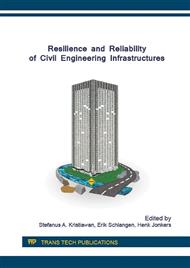p.359
p.364
p.369
p.379
p.385
p.394
p.404
p.408
p.416
Water Resistance Evaluation of Asphalt Concrete Wearing Course Made with Crumb Rubber of Motorcycle Tire Waste
Abstract:
Indonesia has a tropical climate with high rainfall and experiences frequent flooding which are a major causes of road deterioration. It requires solutions one of which is to formulate an asphalt mix that has a high resistance to water, and one of the answers is to mix Crumb Rubber (CRM) with asphalt mix. The purpose of this experimental study was to investigate the effect of crumb rubber of motorcycle tire waste (CRM) on the water resistance of asphalt concrete wearing course (ACWC). CRM, passing #30 sieve size, was mixed with aggregate, five levels of CRM content were investigated in this study, namely, 0%, 0.5%, 1%, 1.5% and 3.0% respectively by weight of mix. A dry process was used in the blending of mixtures. Three of six specimens from each group were tested under standard Marshall. The remaining specimens were tested by immersing in a bath at 60°C for 24 hours. The results indicated that the 0.5% CRM mixture was the best.
Info:
Periodical:
Pages:
404-407
Citation:
Online since:
July 2016
Authors:
Price:
Сopyright:
© 2016 Trans Tech Publications Ltd. All Rights Reserved
Share:
Citation:


